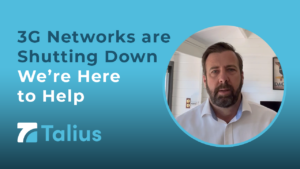Dr Maggie Haertsch (RN, PhD) Consulting Clinical Research Director, Talius Group Ltd. and Principal Fellow, Melbourne School of Population and Global Health, University of Melbourne.
Opportunities for your End of Financial Year technology review
As the next financial year rolls around and financial performance analysis points to ways of improving revenue and profitability, what are the opportunities for digital innovation in your organisation? Here are three questions to ask with examples of digital technology ready to implement.
1. What will improve care?
Consider your trends for complaints, Serious Incidents Response Scheme (SIRS) reporting, review the Incident Management System and Risk Register to help identify areas for improving care and support for your clients and understand how digital technology can change these trends and avert systemic problems.
Let’s look at this in more detail.

In residential aged care more than 50% of the SIRS incidents were categorised as unreasonable use of force and it is estimated that around 80% of these reports were resident-to-resident aggression. Issues like a resident wandering into another person’s room are not uncommon particularly for a person living with dementia. It can be for many reasons including confusing or unclear way finding, the need for companionship, or seeking something that the person many have lost – to just name a few. Technology can support both the freedom of movement and dignity of a resident as well as their own and other’s safety. Technology choices can include:
- Controlled door access;
- Integration of call bells to proximity rules using real-time location sensors (RTLS); or,
- A laundry RFID system that improves the accuracy and efficiency of garment management but also enables exit door controls with blue tooth readers.
A low-cost automated process can indeed save a life.
Neglect is the second highest reportable incident and can result from withholding or providing substandard care. Examples are wounds left untreated, the development of pressure injuries, and long waiting times for assistance. A fall that resulted from a prolonged wait for assistance to attend the bathroom despite a call press would warrant a SIRS report. Technology that supports care teams to manage their workloads are many and varied.
Some technology examples include:
- Real-time call bell reporting system to identify early call bell patterns and staffing response to support improved workflow with handsets to communicate to the resident and to the team.;
- Sleep monitoring and reliable bed exit alerts as well as AI that alerts the need for resident care such as bed repositioning and confirmation that it was done;
- Automation of care minutes in real time to understand the direct care provided to residents using RTLS.
The most common SIRS report in home care was neglect (53%) however with only 1055 total SIRS reports in the Q1 23/24 reporting period also noting that SIRS reporting for the home care consumers is underreported and will become a key focus area of the Aged Care Quality and Safety Commission audits. With the national shortage of aged care workers this issue will continue to be a challenge as the demand for care and services substantially grows. According to the Final Report from the Australian Government’s Aged Care Taskforce released on 12th March 2024, over the next 40 years, the number of people over 80 years of age is expected to triple to more than 3.5 million. Over the next 20 years home care recipients will double from one million currently to two million. To meet this demand, the home care sector will need to be financially stable and administratively efficient.
Technology that provides a connected smart home to the person’s circle of support that links their home care provider, GP and other health professionals as well as their family and friends will be essential to living well and staying at home. The activities of daily living algorithm was developed through the Smarter Safer Homes randomised controlled trial and was recognised in 2023 by the Australian Government as critical technology in the national interest for healthy ageing and is part of the Talius technology ecosystem. It has the ability to identify early changes in a person’s daily patterns to enable adjustments to their care needs at the right times.
2. What technology needs to be updated?

Do a technology audit. Consider how the organisation’s various technology systems support a central approach to management and data insights. For example, if you are providing retirement or independent living can the current personal emergency response services (PERS) continue with the coming 3G shutdown? PERS devices can have additional features that allow for expanded monitoring from voice activation, falls radars, door sensors, movement sensors, smoke detectors and vital signs devices that can all transmit signals through the PERS device enabling increasing safety support as a person becomes more frail and transitions to more intensive in-home support.
Basic needs can sometimes be overlooked such as Wi-Fi stability. This can make a difference to a resident reading the paper on their tablet and the staff using laptops at the point of care.
The Aged Care Industry Information Technology Council (ACIITC) in January this year reported that Australian Aged Care providers generally had a lower level of digital maturity compared to American counterparts. In the report, Digital Maturity in Aged and Community Care, there are useful frameworks to assess your organisation’s progress with digital technologies.
3. How will you be future-focused and ready for the increased demand for care and services?

The Aged Care reform agenda roadmap is moving towards the revised quality standards, the new Aged Care Act, the expansion of care minutes in residential aged care, the expansion of the quality indicators in residential aged care and its introduction in home care. The automation of data collection and reporting to government is a key consideration for many aged care providers.
Consumer centred, co-designed care, and sharing data insights with the older person is an important pillar within the rights based aged care system and integral to the proposed new aged care standards. The use of data by resident and/or resident representative to generate clinical data and drive self-management is purported to be a higher order of digital maturity according to the ACIITC report. These principals are underpin the new aged care bill 2023 (exposure draft) .
Consider technology that provides a client centred model with apps and data sharing capability. Design care and services that can include technology that reduces loneliness and isolation and provides telehealth functionality such as turning the person’s TV into an interactive easy to use communication device, like the Uniper system.
Start now and start small, co-design with Talius as your technology partner and consider the 8 must-haves for digital transformation to make your digital transformation process a rewarding and successful journey.
Explore more about digital technology for improving support for older people and get in touch to discuss your digital transformation plan.



